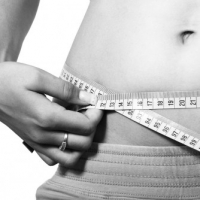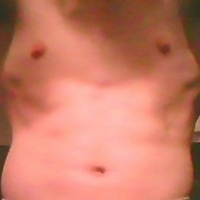The Truth About The Fat Flush Diet Plan
Gittleman's Fat Flush diet plan is based upon essential fats, balanced proteins plus healthy carbs. The diet also recommends "cleansing" tonics such as unsweetened cranberry juice and water, and hot water and lemon juice, as well as many herbs and spices which apparently can aid your weight loss.
Most experts, however, are doubtful of the effectiveness of "fat flushing" and the lack of clinical studies to support this diet or detox diets in general is not surprising. Registered dietitian Jane Kirby says that the notion of the liver being a fat-burning furnace that is revved up by eating certain foods "deserves to be flushed". Kirby also states that there's no science behind this claim and that the Fat Flush diet plan is just a low-calorie diet and most people lose weight when calories are cut this low.
Judith S. Stern, Sc.D., R.D., vice president of the American Obesity Association says "The liver doesn't need to be detoxified. Give me a break." Stern also reminds us that muscle, not the liver, burns fat and lumps the Fat Flush diet plan with others that make unsupported claims. "All of these kinds of books offer pseudoscience," she says. "Pseudoscience is wonderful because it promises you everything, but that's all it is -- a fantasy."
In terms of exercise, the Fat Flush diet plan recommends in addition to regular walking, you "bounce off fat" on a mini-trampoline which will supposedly remove cellulite-like deposits on hips and thighs. Such a claim is unsubstantiated and when you consider that most individuals have a serious exercise deficiency it would be more far more appropriate to recommend more effective and proven exercises.
I have also written many times about the myth that walking burns more fat than more intense exercise such as running, cycling and swimming. While it is true that low-intensity exercise like walking burns a greater percentage of fat, higher intensity exercise burns far more actual fat calories. In other words, if you want to melt the fat off, it's not going to be a walk in the park (pun intended!).
Another point to mention is that following the Fat Flush diet plan faithfully can become expensive. While the weight loss supplements are optional, the Fat Flush diet plan requires unsweetened cranberry juice, whey protein powder, high-lignan flax oil, and organic foods. Many of these are hard to get and not for those on a limited budget.
The diet can also be quite time-consuming, as you are expected to buy fresh fruits and vegetables, and cook and prepare all meals yourself. Due to the nature of the Fat Flush diet plan you will need to be very committed and have a lot of willpower to lose a significant amount of weight on this diet.
While it may be effective for some, the Fat Flush diet plan requires more dedication than many diets and you may find it difficult meeting the many requirements and abiding by the many restrictions. In addition, the low-carb and low-calorie initial phase is a huge turn-off, as this will no doubt result in water and muscle loss, and not simply burn fat as many diet book authors would have you believe.
Related Articles
-
fat burning exercises
Getting a toned and as well , lean physique promotes your self conf
-
Weight Loss Is Not Just About Looking Better
Weight loss has many benefits besides just looking better.
-
Some facts and considerations about weight loss plan
Cutting down weight has always remained a matter of great concern and
-
Loose The Weight You Want And Get Your Figure Back
If you always seem to be on one diet or another, it is time to get of
-
No Pill Weight Loss - What is the Best Way to Lose Weight without Pills?
Find solutions when looking for any pills weight loss methods can som
-
25 Fattening Foods You Should Never Eat
- DON'T MISS
- Fat Burning Furnace - Tips for Rapid Weight Loss without Starving Yourself to Death or Lots of Cardio!
- How to Banish Belly Fat
- Reading Cellulite Cream Reviews Can Help You Choose a Product
- A Look At Atkins OWL Phase
- Are HCG Diet Injections Safe for Weight Loss?
- Weight Loss Programs Online
- Seven Tips For The way to Lose Stomach Fat Fast at Household
- Lose Weight with Juice
- The Highest Calorie Burning Exercise
- The Rice Diet Solution Menu




